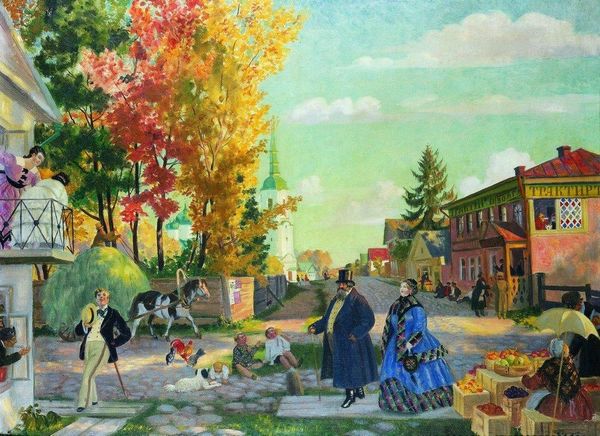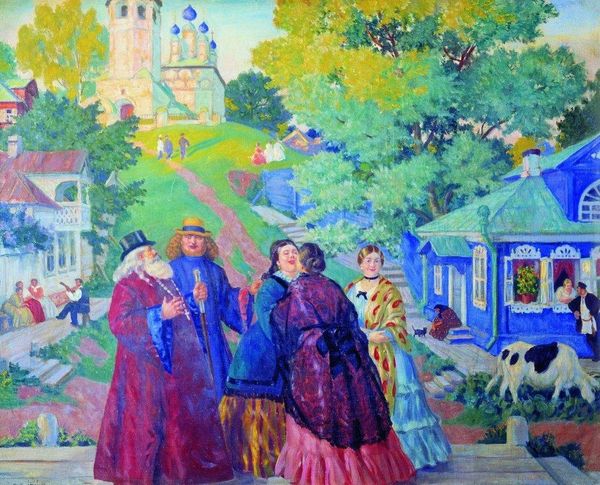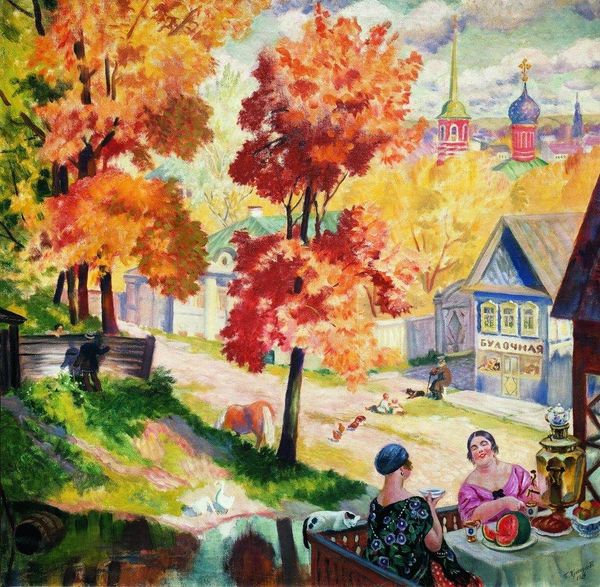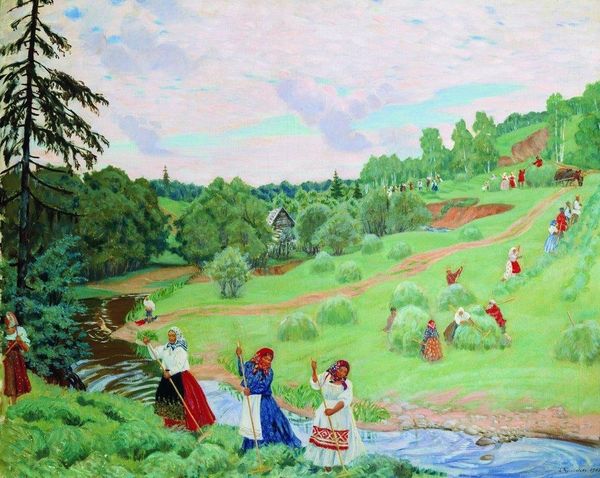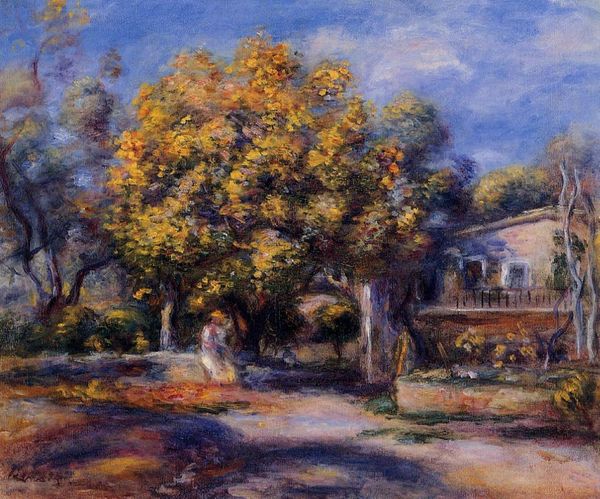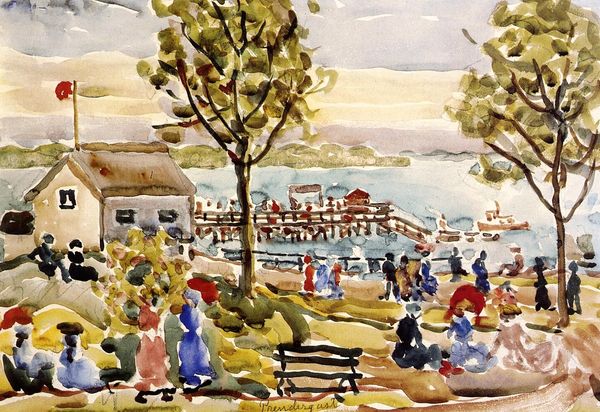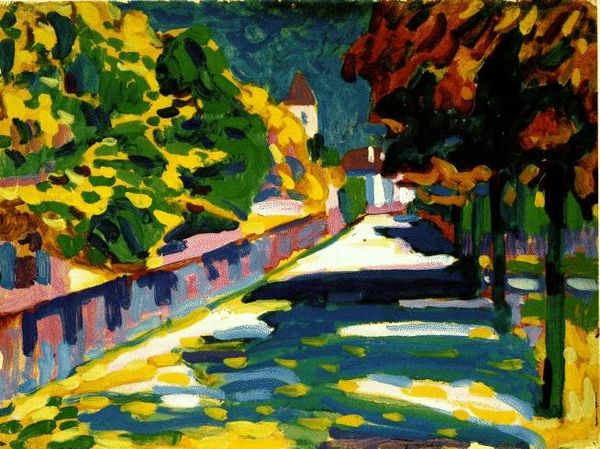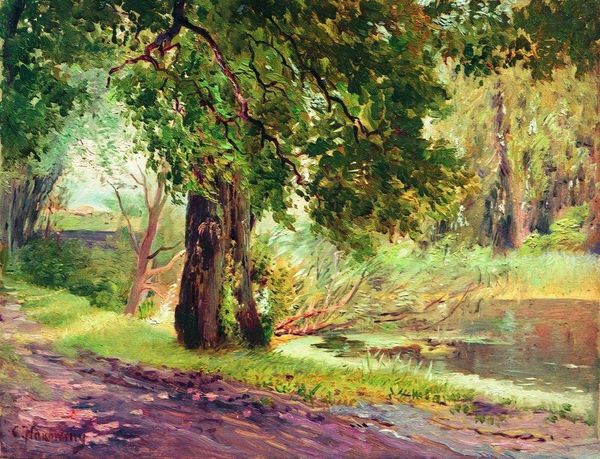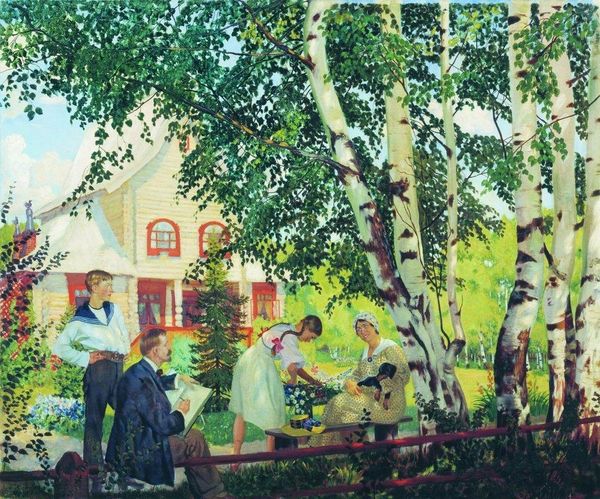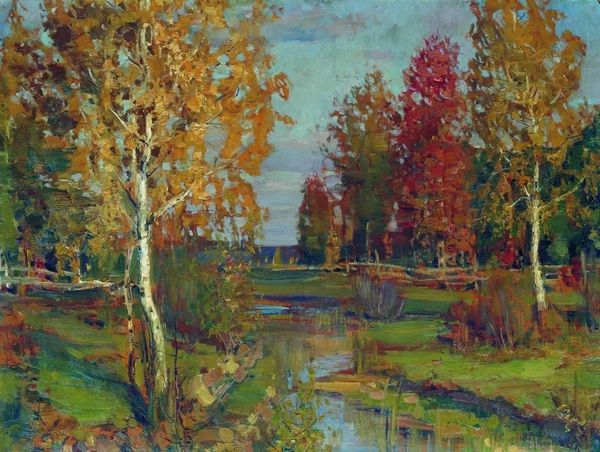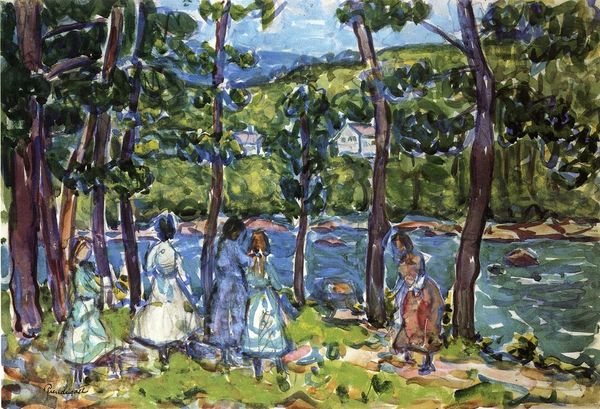
Copyright: Public domain
Editor: So, here we have Boris Kustodiev’s “Autumn,” created in 1924 using oil paint. It feels like a stage, doesn't it? With the figures posed almost theatrically. What are your initial thoughts on this piece? Curator: It's fascinating how Kustodiev uses this seemingly idyllic landscape to convey a very specific moment in Russian cultural history. This work emerged in the early Soviet era; how do you think its presentation of rural life interacts with the evolving socio-political narrative of the time? Editor: Well, on the surface, it seems quite nostalgic, almost like a yearning for a pre-revolution past, but that could be naive. What complexities are we missing? Curator: Precisely. The "folk art" style and the vibrant colors certainly evoke a sense of tradition. But consider who the target audience might have been. Did the burgeoning Soviet art institutions encourage or discourage such sentimental portrayals? Editor: So, it’s not just about capturing beauty, but also about navigating the artistic landscape of the time, making certain statements? Curator: Absolutely. Kustodiev, even while dealing with illness, subtly negotiated his artistic vision within the constraints and opportunities presented by the new regime. And those choices... what message did that convey to its viewers? Editor: That definitely adds another layer to it. I was initially drawn to the colors and the overall 'pleasant' feeling, but now I see it as much more complex and culturally loaded. Curator: Exactly! It makes you wonder about the artist’s intent and the viewer’s perception, even now. Art, even seemingly simple landscape painting, is never truly apolitical. Editor: This has really broadened my perspective; thank you! It's fascinating to consider the social and political undercurrents within seemingly peaceful scenes. Curator: It’s the questions we ask of the artwork that enrich our experience.
Comments
No comments
Be the first to comment and join the conversation on the ultimate creative platform.
